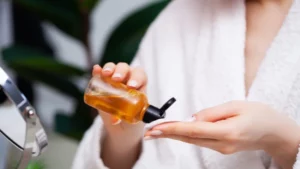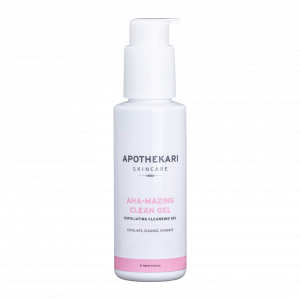Today, March 20th, marks the Spring Equinox and we’re sharing tips to help you transition to a spring skincare routine. More in this post.
How Can I Take Care of My Skin in Spring?
While springtime sun exposure is less dangerous than that in the summer, you still need to be concerned about the potential damage from the sun’s UVA and UVB rays. UVB rays contribute to sunburn (along with some types of skin cancer) while UVA rays penetrate deeper and contribute to signs of skin aging including wrinkles, sagginess, age spots and with skin cancer. For this reason, it’s important to protect your skin during the spring and all year long. It is also a good time to take stock of the products you’re using in preparation to transition over from winter skin care.
5 Reasons Your Spring Skincare Routine Needs Sunscreen
It’s not only spring, but year round that you need to pay attention for healthy skin. The main culprit is sun damage and these 5 reasons are why your spring skincare routine must include sunscreen:
- More Than 3.5 Million New Skin Cancer Cases Each Year. In the United States alone, more than 3.5 million cases of skin cancer are diagnosed each year. Risk factors for all types of skin cancer include skin that burns easily; blond or red hair; a history of excessive sun exposure, including sunburns; tanning bed use; immune system-suppressing diseases or treatments; and a history of skin cancer.
People with more than 50 moles, atypical moles, or large moles are at an increased risk of developing melanoma, as are those with light skin and freckles, and those with a personal or family history of melanoma. - Skin Cancer Can Affect Anyone. Regardless of skin color, skin cancer can strike anyone. In patients with skin of colour, it is often diagnosed in its later stages, when it’s more difficult to treat. Research has shown that patients with skin of colour are less likely than Caucasian patients to survive melanoma. They are also more prone to skin cancer in areas that aren’t commonly exposed to the sun, like the palms of the hands, the soles of the feet, the groin and the inside of the mouth. They also may develop melanoma under their nails.
- 90 Percent of all Skin Cancers Attributed to Excessive Sun Exposure. Research indicates that UV light from the sun and tanning beds can both cause melanoma and increase the risk of a benign mole progressing to melanoma. Increasing intermittent sun exposure in childhood and during one’s lifetime is associated with an increased risk of squamous cell carcinoma, basal cell carcinoma and melanoma. Even one blistering sunburn during childhood or adolescence can nearly double a person’s chance of developing melanoma. Five or more between ages 15 and 20 increases one’s melanoma risk by 80 percent and nonmelanoma skin cancer risk by 68 percent.
- Springtime Sun is Not Safe. In fact, it is sometimes considered more dangerous because the cooler temperatures may fool you into thinking you aren’t getting much sun exposure. Springtime is a good time to purchase a new bottle of sunscreen. Sunscreens expire and can lose their effectiveness after being opened for a year or so. Check the expiry date on your sunscreen and replace if necessary.
- Daily Sunscreen Use Cuts the Incidence of Melanoma. Research in 2010 showed a reduction by 50%. Choose a sunscreen with an SPF of at least 30 and make sure you apply enough. In general, use ¼ teaspoon for your face alone. From head to foot (assuming you’re wearing a bathing suit), apply the equivalent of a shot glass full of sunscreen. Sunscreen breaks down when it is exposed to sunlight, sweat or water so it should be reapplied every two hours or after you are exposed to water or sweating heavily.
Sunscreen is an Essential Part of Your Spring Skincare Routine
While it’s always important to cleanse, protect skin with antioxidants, repair with retinoids and moisturize, sun protection is #1. Follow these tips to get the most out of sun protection.
- Practice Sun Smart Habits. Since UV light exposure is the most preventable risk factor for all skin cancers, the American Academy of Dermatology encourages everyone to practice safe habits:
- Seek shade and avoid sitting directly in the sun between 10:00 AM and 4:00 PM
- Wear protective clothing, including long sleeves and legs, wide-brimmed hats,
- Use a sunscreen with an SPF of 30+.
- Avoid tanning beds or sun lamps, which are sources of artificial UV radiation that may cause skin cancer.
- Protect your Eyes. Between five and 10 percent of skin cancers occur on the eyelids according to the Skin Cancer Society. Use UV-blocking sunglasses. Large frames or a wrap-around styles are best.
- Skin Cancer is Curable. Basal cell and squamous cell carcinomas, the two most common forms of skin cancer, are highly curable if detected early and treated properly. The vast majority of skin cancer deaths are from melanoma, which has a five-year survival rate of 99 percent for people whose melanoma is detected and treated before it spreads to the lymph nodes.
- Get Checked Out. The American Academy of Dermatology encourages everyone to perform skin self-exams to check for signs of skin cancer and get a skin exam from a doctor. A dermatologist can make individual recommendations as to how often a person needs these exams based on risk factors, including skin type, history of sun exposure and family history.
Skin cancer warning signs include changes in size, shape or color of a mole or other skin lesion, the appearance of a new growth on the skin, or a sore that doesn’t heal. If you notice any spots on your skin that are different from the others, or anything changing, itching or bleeding, the American Academy of Dermatology recommends that you make an appointment with a board-certified dermatologist.
If you’re anything like me, it’s been a long, cold and grey winter and you’re hungry for springtime sun! Wear your sunscreen, put on your favourite pair of sunglasses and enjoy. Let us know if you have any spring skincare routine tips to share.







